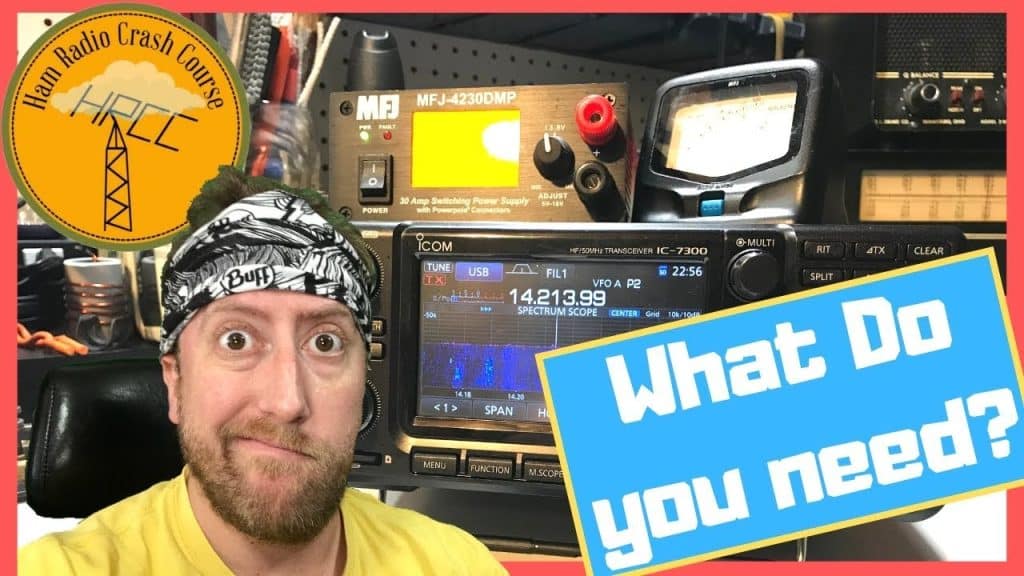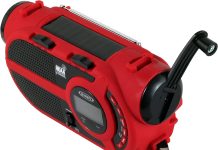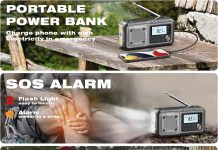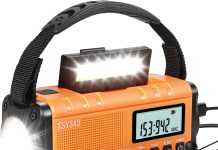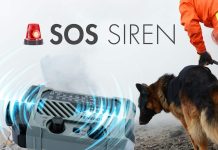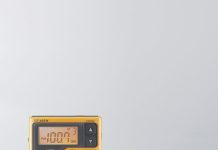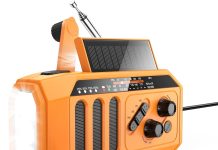In times of crisis or unexpected emergencies, communication becomes vital. The name might deceive you, but using a ham radio in an emergency is not as unusual as it sounds. With their reliable and wide-reaching capabilities, ham radios can prove to be invaluable tools in these situations. Whether you’re facing natural disasters, power outages, or even global network failures, having a ham radio at your disposal can mean the difference between staying connected and being isolated. But how exactly do ham radios work in emergencies, and what do you need to know to use one effectively? Let’s explore the world of ham radios and their potential lifesaving abilities.
Review contents
How Ham Radios Work
Ham radios, also known as amateur radios, are essential communication devices that allow individuals to communicate with each other over long distances. Unlike traditional radios, which operate on specific frequency bands and channels, ham radios can operate on a wide range of frequencies, giving users the ability to communicate globally.
Overview of ham radios
Ham radios are two-way radios that are operated by licensed amateur radio operators, commonly referred to as “hams.” These radios use radio waves to transmit and receive messages, allowing users to communicate with each other even when traditional communication systems may be unavailable.
Frequency bands used
Ham radios operate on different frequency bands, each designated for a specific purpose. These frequency bands include the very high frequency (VHF) band, ultra-high frequency (UHF) band, high frequency (HF) band, and others. Each band has its advantages and limitations in terms of range and the type of communication it can support.
Transmitting and receiving signals
When using a ham radio, you can transmit and receive signals by tuning the radio to a specific frequency within the allowed frequency band. By using a microphone or other input device, you can modulate your voice or data onto a radio wave, which is then transmitted through the antenna. On the receiving end, the radio captures the radio wave through its antenna and converts it back into audible sound or data.
Transmission power and range
The transmission power of a ham radio determines the range at which it can communicate. Higher transmission power allows for communication over longer distances. However, it is important to note that the range can also be affected by various factors such as terrain, atmospheric conditions, and the presence of obstacles.
Advantages of Ham Radios in Emergencies
During emergencies, communication is often disrupted or overwhelmed. In such situations, ham radios offer numerous advantages that make them a reliable and valuable tool.
Reliability in disasters
Ham radios have a reputation for their reliability during disasters. Unlike traditional communication systems that rely on infrastructure such as cell towers or landlines, ham radios operate on their own independent network. This means that even if the power goes out or the infrastructure fails, ham radios can still be relied upon for communication.
Independence from infrastructure
One of the greatest advantages of ham radios in emergency situations is their ability to function without relying on existing communication infrastructure. This independence allows ham radio operators to communicate directly with each other, forming a decentralized and robust communication network. This autonomy becomes crucial when traditional channels of communication are overloaded or inaccessible.
Ability to operate off the grid
In an emergency, power outages are common, making it difficult to charge electronic devices and maintain communication. However, many ham radios are designed to operate using alternative power sources such as batteries or solar panels. This allows operators to stay connected and communicate even in the absence of traditional power sources.
Long-range communication capabilities
Ham radios are capable of long-range communication, making them ideal for emergencies that require communication over vast distances. Using the HF frequency bands, ham radios can communicate over thousands of miles, providing a means of communication when other methods such as cell phones or internet-based systems are unavailable.
This image is property of i.ytimg.com.
Licensing and Legal Considerations
Before operating a ham radio, it is important to obtain the necessary license and understand the legal considerations associated with its use.
Obtaining a ham radio license
In most countries, operating a ham radio requires a license. These licenses are issued by the regulatory authority responsible for overseeing amateur radio operations. To obtain a license, individuals need to pass an examination that tests their understanding of radio principles, regulations, and operating procedures. The licensing process ensures that only knowledgeable and responsible operators are granted permission to use ham radios.
Understanding the specific regulations
Different countries have different regulations regarding the operation of ham radios. It is essential to familiarize yourself with these regulations to ensure compliance. Regulations may include frequency band allocations, power limits, and restrictions on the types of communication that are permissible. Adhering to these regulations helps promote a safe and responsible ham radio environment.
Operating within the law
When using a ham radio, it is important to operate within the legal boundaries set by the regulatory authorities. This includes following frequency band allocations, using the appropriate power levels, and adhering to the specific regulations outlined in the license. By operating within the law, you not only protect yourself from potential legal consequences but also contribute to the overall effectiveness and integrity of the amateur radio community.
Radio frequency interference concerns
Operating a ham radio requires a good understanding of radio frequency interference (RFI) and the measures to mitigate it. RFI can occur when the signals from a ham radio interfere with other electronic devices, affecting their performance. To prevent interference, it is important to ensure proper antenna grounding, use quality equipment, and follow best practices for radio wave propagation. Understanding and addressing RFI concerns not only improves communication quality but also fosters good relations with other users of the radio spectrum.
Emergency Communication Networks
In emergency situations, the effectiveness of ham radios is often maximized through coordinated efforts and involvement in specialized emergency communication networks.
Amateur Radio Emergency Service (ARES)
ARES is a volunteer organization comprised of licensed amateur radio operators who provide communication support during emergencies. Members of ARES are trained and ready to deploy their ham radios to assist with emergency response efforts, providing vital communication links between different agencies and affected communities.
Radio Amateur Civil Emergency Service (RACES)
RACES is a program specifically designed to supplement government communication systems during emergencies. RACES stations are authorized by local, state, or federal government entities and operate under their guidance. By working closely with government agencies, RACES provides a valuable service by ensuring reliable communication between emergency responders and officials.
National Traffic System (NTS)
The NTS is a network of amateur radio operators who voluntarily pass messages during emergencies. The network assists in transmitting important information across long distances when other communication systems are not available. NTS operators excel in relaying time-sensitive messages, demonstrating the effectiveness of ham radios in emergency scenarios.
Skywarn: Weather spotting
Skywarn is a weather spotting program that relies heavily on ham radios for communication. Trained ham radio operators act as weather spotters, relaying real-time weather observations, such as severe storms or tornado sightings, to the National Weather Service. These reports enable accurate and timely weather alerts, contributing to public safety and preparedness.
This image is property of i.ytimg.com.
Preparing for Emergency Communications
To effectively utilize ham radios during emergencies, it is crucial to be well-prepared and equipped with the necessary tools and knowledge.
Selecting the right ham radio equipment
Choosing the right ham radio equipment is essential for effective emergency communications. Consider factors such as the desired frequency bands, transmission power, portability, and durability. Additionally, familiarize yourself with the features and capabilities of the radio to ensure it meets your specific needs.
Antenna considerations
The antenna is a critical component of a ham radio system. Different types of antennas provide varying performance characteristics and radiation patterns. Factors such as antenna height, location, and orientation can significantly impact the range and quality of communication. Understanding the fundamentals of antenna selection and placement is key to optimizing communication capabilities.
Backup power sources
During emergencies, power outages are common, making it crucial to have backup power sources for your ham radio equipment. Batteries, solar panels, generators, or even hand-cranked charging devices can provide the necessary power to keep your radio operating. Regularly check and maintain backup power sources to ensure they are ready when needed.
Ensuring proper maintenance and updates
Regular maintenance and updates are essential to keep your ham radio equipment in optimal working condition. This includes inspecting and cleaning the equipment, checking connections, and updating firmware or software when applicable. Additionally, staying updated with the latest regulations, operating procedures, and emergency communication protocols is vital to ensure effective communication during emergencies.
Types of Emergencies Where Ham Radios Are Useful
Ham radios are versatile tools that can be utilized in various emergency situations, providing reliable communication when it is needed most.
Natural disasters (hurricanes, earthquakes, etc.)
During natural disasters, traditional communication systems often fail or become overwhelmed. Ham radios can fill this gap, allowing individuals and emergency responders to communicate and coordinate relief efforts. Whether it’s reporting road closures, requesting assistance, or relaying critical information, ham radios play a crucial role in disaster response and recovery.
Severe weather events (tornadoes, storms)
Severe weather events require real-time updates and coordination among various emergency response entities. Ham radios, especially when integrated into weather spotting programs like Skywarn, enable weather spotters to communicate directly with meteorologists and emergency management agencies. This contributes to accurate and timely weather warnings, giving communities the opportunity to take necessary precautions and evacuate if required.
Public health emergencies
During public health emergencies, such as pandemics or disease outbreaks, communication is paramount. Ham radios provide a reliable means of communication for healthcare facilities, emergency medical services, and community organizations. They enable the transmission of vital information, such as patient statuses, supply needs, and coordination of medical resources.
Man-made crises (power outages, communication failures)
Man-made crises, such as power outages or communication failures, can severely disrupt normal communication channels. In such situations, ham radios can be relied upon to establish communication links between affected individuals, emergency responders, and support organizations. The ability to operate off the grid and independently from existing infrastructure makes ham radios invaluable during these times.
This image is property of offgridsurvival.com.
Interoperability and Coordination
During emergencies, effective communication requires interoperability and coordination among different entities and ham radio operators.
Working with emergency response agencies
Ham radio operators often work alongside emergency response agencies, providing critical communications support. By understanding the needs and protocols of these agencies, ham radio operators can seamlessly integrate within the emergency response network, enhancing overall coordination efforts.
Coordinating with other ham radio operators
Ham radio operators can form networks or groups to promote effective communication and resource sharing during emergencies. By coordinating frequencies, establishing contact schedules, and sharing information, the collective efforts of multiple ham radio operators can enhance the overall effectiveness of emergency communications.
Using common emergency protocols
Standardized emergency communication protocols are crucial to ensure efficient and effective communication during emergencies. Practicing and utilizing protocols such as Incident Command System (ICS) or the Radio Amateur Civil Emergency Service (RACES) protocols allow ham radio operators to seamlessly communicate with other emergency response entities, promoting interoperability and coordination.
Sharing critical information
One of the primary roles of ham radios during emergencies is the transmission of critical information. Ham radio operators are responsible for accurately relaying crucial messages such as evacuation notices, safety alerts, or requests for assistance. Sharing this information in a clear and concise manner helps facilitate a timely and coordinated response.
Ham Radio Training and Skills
To fully utilize the capabilities of ham radios in emergencies, it is important to develop the necessary training and skills.
Learning basic radio operation
Understanding the fundamentals of radio operation is the first step towards becoming a proficient ham radio operator. This includes learning about frequency bands, operating procedures, call signs, and basic radio terminology. Various online resources, local amateur radio clubs, and licensing courses provide opportunities to learn and develop these foundational skills.
Developing emergency communication skills
Effective emergency communication requires specific skills that go beyond basic radio operation. Training courses or simulated exercises can help hone skills such as message handling, emergency protocols, and working in high-stress situations. By actively participating in emergency communication drills, operators can build proficiency and confidence in their abilities.
Participating in simulated emergency exercises
Simulated emergency exercises, commonly known as “emcomm drills,” provide real-life scenarios for ham radio operators to practice their skills. These exercises simulate emergency situations, allowing operators to test their equipment, practice communication protocols, and identify areas for improvement. Participation in emcomm drills helps operators become better prepared for actual emergencies.
Ongoing training and education
As technology and regulations evolve, it is important for ham radio operators to stay updated through ongoing training and education. This includes attending workshops, seminars, or webinars related to emergency communication and amateur radio. Staying informed and continuously improving skills ensures operators are ready to respond effectively during emergencies.
This image is property of erepublic.brightspotcdn.com.
Challenges and Limitations of Using Ham Radios in Emergencies
While ham radios are valuable tools in emergency communications, they are not without challenges and limitations.
Signal interference and propagation issues
Ham radios can be susceptible to signal interference, which can degrade the quality of communication. Interference can be caused by various factors such as nearby electronic devices, atmospheric conditions, or strong nearby signals. Understanding how to identify and mitigate interference issues is crucial for maintaining reliable communication.
Limited spectrum availability
The availability of frequency bands for amateur radio use is limited. This means that during emergencies when ham radio usage increases, the available spectrum becomes more crowded. The limited spectrum availability can result in increased competition for communication, making it crucial to optimize radio settings and adhere to operating protocols to minimize interference.
Importance of antenna height and location
The performance of a ham radio system is highly influenced by the height and location of the antenna. Higher antennas and antennas placed in clear, unobstructed areas generally provide better communication range and quality. However, during emergencies, finding suitable antenna locations may be challenging. It is important to adapt to the given circumstances and optimize antenna placement to maximize communication capabilities.
Overcrowded channels and increased competition
During emergencies, the number of ham radio operators utilizing the available frequency bands significantly increases. This increased competition for spectrum can lead to crowded channels and challenges in establishing clear and uninterrupted communication. Adhering to good operating practices, utilizing effective antenna configurations, and practicing efficient communication protocols can help mitigate these challenges.
Case Studies: Real-Life Examples
Numerous real-life examples highlight the significant role that ham radios have played in emergency communications.
Successful emergency communications using ham radios
In 2017, during Hurricane Maria in Puerto Rico, traditional communication infrastructure was severely damaged, leaving millions without access to communication. Ham radio operators stepped in, establishing vital communication links and providing critical assistance to affected communities. Their efforts were instrumental in connecting isolated areas with emergency services and coordinating rescue efforts.
Lessons learned from past incidents
Post-incident analyses of emergencies consistently highlight the importance of effective communication. Past incidents, such as the Tohoku earthquake and tsunami in Japan, have demonstrated the value of ham radios in providing reliable and independent communication when other systems fail. These incidents have led to improved coordination between ham radio operators and emergency response agencies to enhance emergency communication strategies.
Contributions to community resilience
Ham radios play a significant role in building community resilience during emergencies. By providing a means of communication that continues to function even in dire circumstances, ham radio operators empower communities to maintain connectivity, coordinate resources, and support each other. The presence of a strong amateur radio community is often a testament to the resilience and preparedness of a community.
Prominent role in disaster response
Ham radios have played a prominent role in disaster response efforts around the world. From earthquakes and hurricanes to wildfires and floods, ham radio operators have proven themselves as invaluable assets in emergency situations. Their ability to quickly deploy and establish reliable communication networks has saved lives, enhanced coordination, and provided critical information to decision-makers.
In conclusion, ham radios are powerful tools that provide reliable communication during emergencies. Their ability to operate independently from existing infrastructure, long-range communication capabilities, and integration with emergency communication networks make them an essential component of emergency preparedness. By obtaining the necessary licenses, understanding the legal considerations, and developing the required skills, you can become a crucial asset in emergency communication efforts. So, whether it’s a natural disaster, severe weather event, or public health emergency, a ham radio can be your lifeline when all other communication systems fail. Stay prepared, stay connected, and make a difference with ham radios in emergencies.
This image is property of i.ytimg.com.






